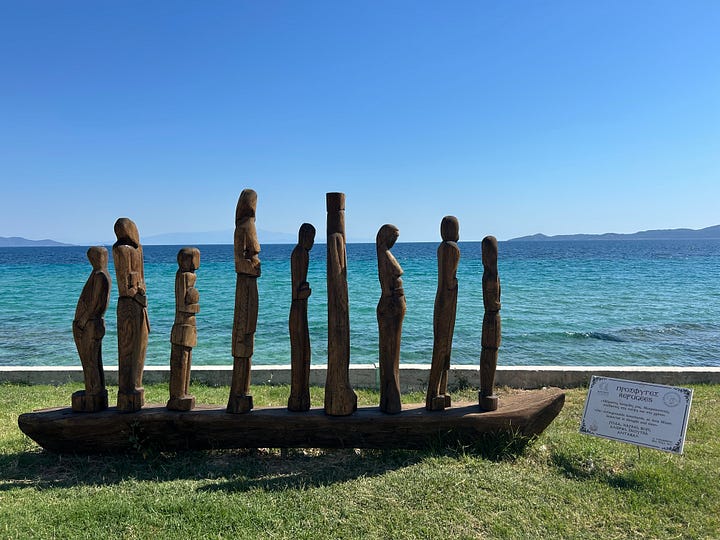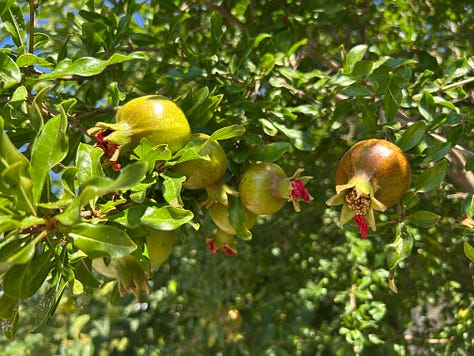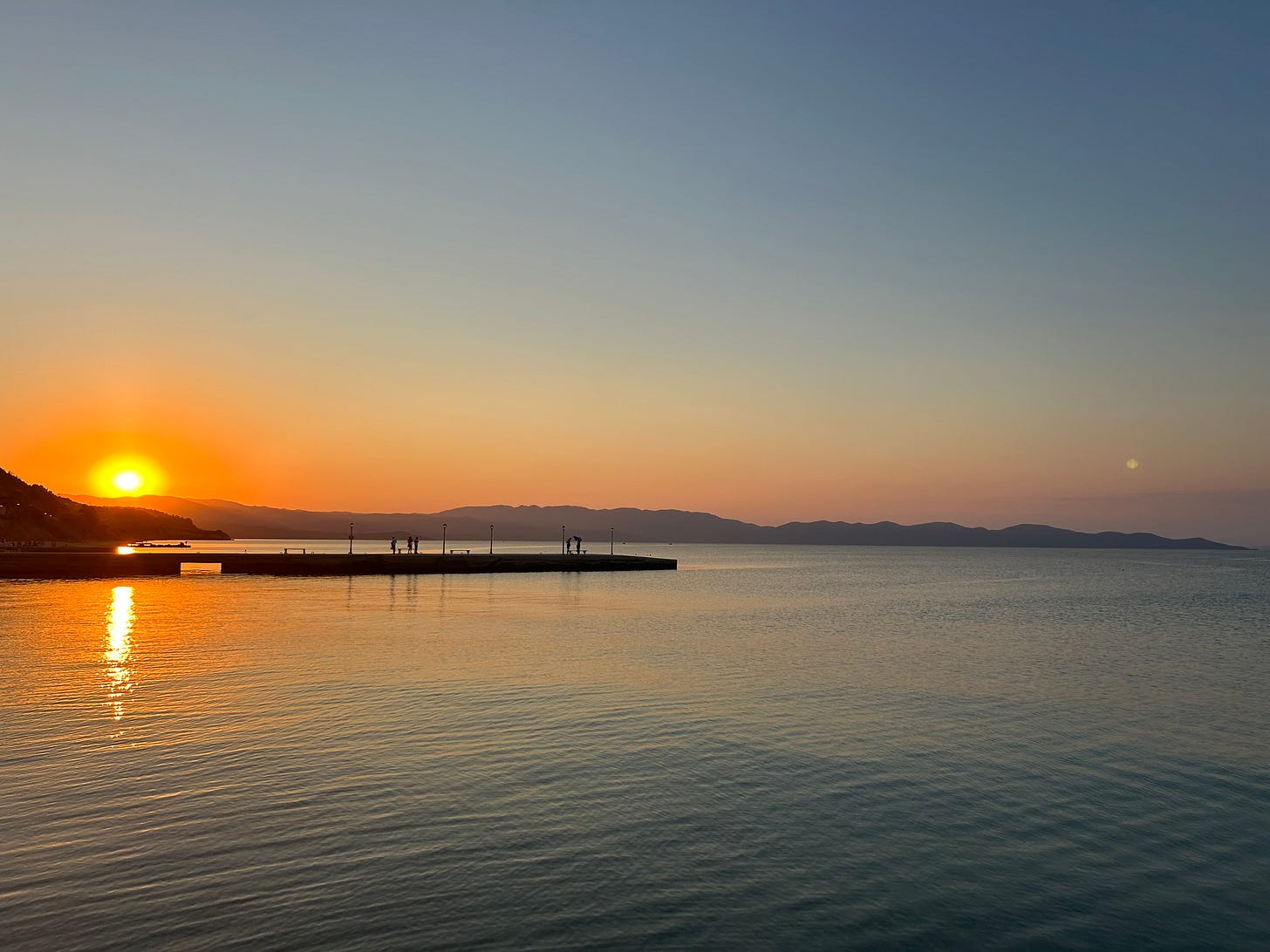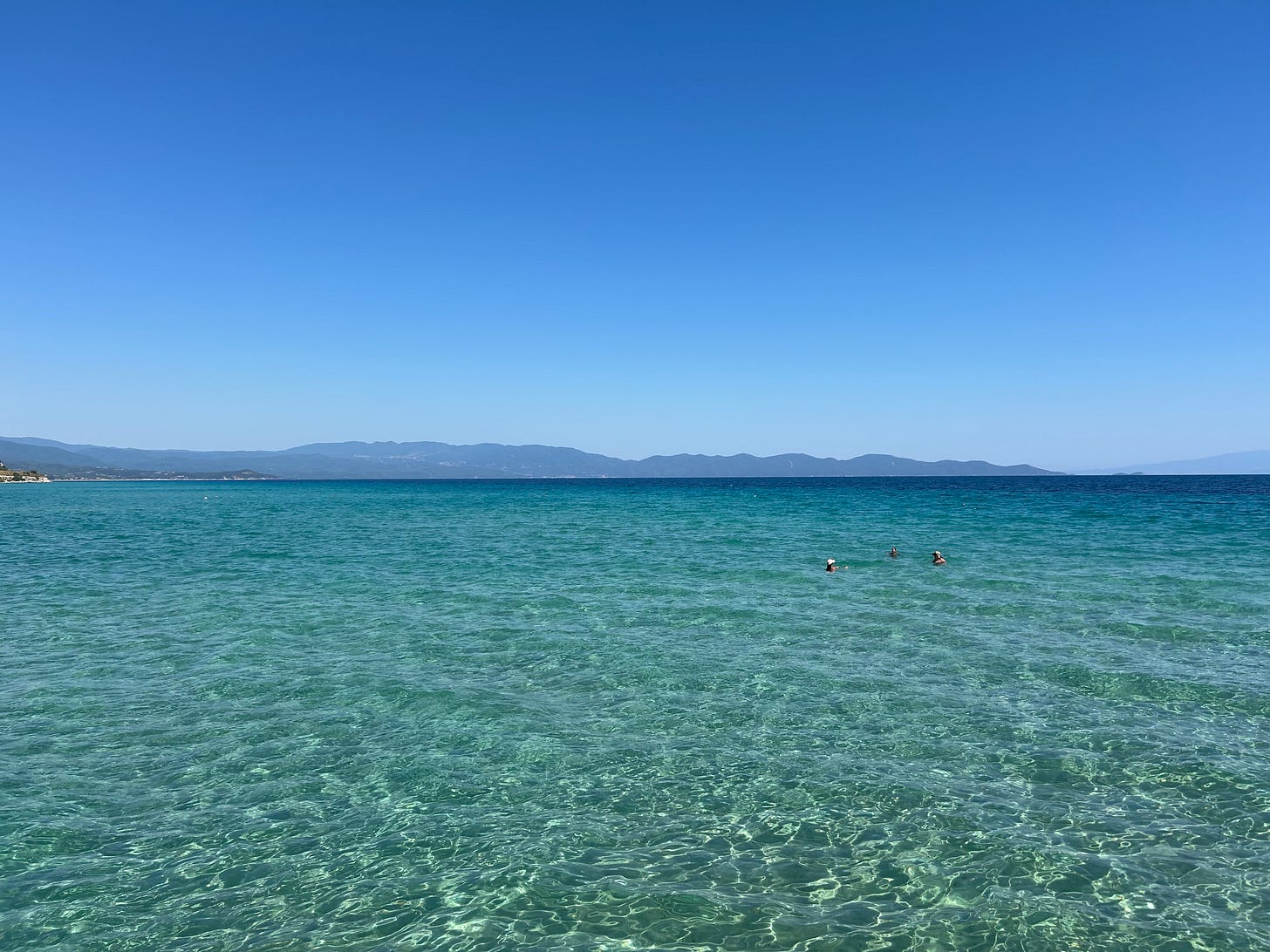Uprooting, Rerooting and the Migratory Histories of Halkidiki
How a small village on the Aegean coast has planted memory, culture and geopolitical consciousness into the soil of modern Greece
In 1923, the Treaty of Lausanne was signed in the wake of inter-communal violence across the Balkans and the conclusion of the First World War. As the longest living of all the peace treaties signed in the early twentieth century, the enduring impact of Lausanne remains socially, culturally and politically profound. One of the most significant products of the Treaty of Lausanne was the agreement of population exchange between ethnically Turkish Muslims and Greek Christians, in an act of separation that sought to fabricate peace by manufacturing two ethnically homogenous states.
Following a bilateral agreement between Ottoman and Greek representatives Ismet and Venizelos – shaped by the geopolitical manoeuvring of the ‘Great Powers’ such as Britain, France and Italy – over 1.5 million people were displaced from their home villages. As such, this swap constituted one of the largest formal population exchanges in Europe, as people’s lives were forcibly relocated either ‘eastwards’ to Turkey or ‘westwards’ to Greece. The scars, slow healing and shoots of new life created by the treaty are visible across modern day Greece and Turkey, with refugee communities of Greeks from Asia Minor rebuilding their lives in newly constructed villages both in Greece’s biggest cities and most remote corners. Whilst the exchange of populations and redrawing of territorial borders decreed by the stroke of a pen in a resort town in Switzerland succeeded in creating the modern state of Turkey from the ashes of the Ottoman Empire, it also forged a collective geopolitical memory of trauma, displacement and loss for generations of refugees.

The paradox of Lausanne lies in the gulf between its irenic intentions and its catastrophic consequences. Whilst the treaty was intended to bring about peace following the horrors of war, the geopolitical manoeuvring inherent to twentieth century diplomacy had violent implications on the ground. Moreover, the peace of displaced communities came at an immeasurable cost, created only through processes that might now be considered ethnic cleansing or forced resettlement. This is perhaps the reason why, in Greece, the inter communal ethnic violence leading up to and including the forced population exchanges of 1923 are widely referred to as the ‘Asia Minor Catastrophe’ or ‘Μικρασιατική Καταστροφή΄.
However, despite the tragic histories of these communities, their forced displacement and relocation across the eternal ethnic, religious and cultural crossroads of the Mediterranean reveals how the dynamics of migratory histories echo across this region even today. The cultivation of a ‘meta-memory’ sustains the cultural identity of refugee communities through migratory histories, whilst extending the collective geopolitical understanding of traumatic events towards future generations. The importance of culture – whether music, cuisine or dialect – in the reproduction of this threatened identity throughout time and space was recently demonstrated by Greece’s Eurovision contestant Klavdia in her song ‘Asteromata’.
The way in which oral histories of community elders tell tales of grief, loss and resilience demonstrate how geopolitical events become manifested in folkloric performances that continue to this day. However, the living legacies of forced migration are not confined to memory alone, but are also imprinted on the physical and demographic landscapes of modern Greece.
One of the areas with the highest concentration of Pontic Greeks and refugees from Asia Minor is the coast of Halkidiki, a region composed of three peninsulas in the north of Greece. The location of resettlement for Asia Minor refugees in modern-day Greece itself tells a story of geography, politics and belonging. In a process overseen by the League of Nations, many poorer urban refugees were resettled in informal settlements on the outskirts of major cities such as Athens and Thessaloniki, viewed with suspicion by the authorities of the '‘Old Greece’. Meanwhile, more rural or agrarian communities established new settlements in landscapes reminiscent of their lost homelands, often in peripheral regions of Makedonia or Thrace which were themselves contested and liminal spaces caught between civilisations.
As such, the fact that the mountainous yet coastal settlements on the margins of political power at the most remote extensions of Halkidiki reflected the erstwhile homes of displaced Greek communities in Anatolia is no accident. In fact, the resemblance functions as yet another way in which the memory of refugees is performed geopolitically. “On the coast of Halkidiki, we are all refugees. Ourselves, our grandmothers and our grandfathers,” explains the 30-year-old manager at my hotel in Halkidiki as we discuss my interest in the Eastern Mediterranean, in a banal yet striking acceptance of this timeless geopolitical consciousness. Villages dotted around the coast of Halkidiki were all settled by refugees from Asia Minor, with their names often bearing the prefix ‘nea’ (or ‘new’) in a linguistic reincarnation of their abandoned homelands. From Nea Moudania in Halkidiki to Nea Smyrna in Athens, these settlements embody the lived geopolitical experiences of one of the largest and most successful resettlements of refugees in the history of the modern nation state.

Whilst the quiet stories of endurance and memory continue in communities dispersed across the region, their influence is particularly apparent in the small town of Nea Roda. Located on the northern coast of the Athos peninsula, Nea Roda is situated in a symbolic setting along a stretch of coastline blessed with calm, aquamarine waters and framed by the shadows of mountainous landscapes across the water. The founding families of Nea Roda were predominantly farmers or fishers from the coastal village of Roda (now known as Narli in modern-day Turkey). As such, the resettlement of these refugees serves a psychological, cultural and geopolitical purpose, with the sea-facing geography and fertile mountainous topography of Nea Roda mirroring the ancestral homeland of its new residents.
The wooden sculpture of refugees perched on the coastal promenade of Nea Roda is deeply simplistic yet also highly evocative of the forced displacement of entire communities precipitated by the population exchanges of 1923. Framed by the Aegean Sea behind, the monument also represents the fact that such journeys were undertaken by boat across the Mediterranean, demonstrating yet another connection with their lost homelands forged through the sea. The plaque commemorating the traumatic experiences of refugees reads: “Our unforgettable homelands in Asia Minor, immortal in thought and time”.


The village of Nea Roda is also notable for the cultural weight of its etymology. In Greek, ‘roda’ means ‘pomegranate’, which acts as a symbol of renewal, rebirth and optimism that demonstrates the resilience of its refugee communities. However, in this village, the symbolism of the pomegranate goes further. It extends into a living, breathing manifestation of continuity between ancestral homelands and refugee settlements, as refugees from Roda often brought pomegranate trees from the soil of their ancestral homelands with them before planting them again in the gardens of their new homes. Today, as you walk through the streets of Nea Roda, pomegranate trees thrive in the verdant courtyards of local residents, in a powerful representation of the enduring living connections with their lost lands.



The act of being forcibly uprooted before laying down roots in an unfamiliar land is one that echoes across cultures, languages and civilisations. However, the case of Nea Roda seems special to me. It acts as an enchanting and evocative homage to the geopolitical trauma experienced by refugees from Asia Minor in the early twentieth century. It also gives new meaning to the Greek word for displacement, ‘ξεριζωμός’, which literally translates to ‘uprooting’. Nea Roda is unique – as it represents this act of ‘uprooting’ and ‘rerooting’ both metaphorically and physically. In this village, Asia Minor refugees maintain a deep bond with their homelands not only through a collective geopolitical memory, but also through natural life itself.
Between their abundance of ethnographic folklore museums and the profound symbolism of the pomegranate trees, the villages of Halkidiki become a living geopolitical archive acting as a repository for collective memories that transcend generations. The dynamic manifestation of uprooting and rerooting in Nea Roda reminds us of the importance of lived experience, shifting scale from the macro-scale geopolitical upheaval of the twentieth century to a single pomegranate tree in one courtyard of this remote Greek village. This microcosm of forced migration vividly demonstrates the enduring significance of everyday geopolitics – where memory, place and identity intersect through individual stories and lived experiences. From Lausanne to the Aegean Sea, shifting scale from the ‘macro’ to the ‘micro’ helps us to understand the geopolitical dynamics of a region at the crossroads of migration since time immemorial. In Nea Roda, the grand narratives of geopolitical histories unfold in the smallest of details: a tree, a name and a home.





